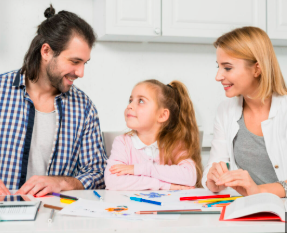Teaching young children is both a joyful and impactful experience. During the toddler and preschool years, children are full of curiosity, energy, and a desire to learn through play and discovery. Educators and caregivers play a key role in nurturing their growth through thoughtful, age-appropriate strategies. Here are some best practices for creating meaningful early learning experiences for toddlers and preschoolers.
1. Create a Safe and Welcoming Environment
Young learners thrive in spaces that feel warm, safe, and inviting. Classrooms or learning areas should be designed with child-sized furniture, soft lighting, and engaging materials. A well-organized and consistent setting helps children feel secure, which in turn supports their willingness to explore and learn.
2. Use Play as a Foundation for Learning
Play is a child’s natural way of understanding the world. Through guided and free play, children develop important skills in language, problem-solving, motor coordination, and social interaction. Incorporating games, pretend play, sensory bins, building blocks, and music can make learning joyful and memorable.
3. Encourage Language Development Through Interaction
Regular conversations, storytelling, singing, and reading aloud are powerful tools to build vocabulary and communication skills. Teachers and parents can ask open-ended questions, respond thoughtfully, and model good listening to help children express themselves with confidence.
4. Foster Social and Emotional Growth
Teaching toddlers and preschoolers includes guiding them in understanding their feelings and forming positive relationships. Activities that involve sharing, turn-taking, empathy, and simple conflict resolution prepare children for success in group settings. Praise, encouragement, and consistent routines also support emotional security.
5. Introduce Early Literacy and Math Concepts Gently
Rather than formal instruction, introduce letters, numbers, shapes, and patterns through everyday experiences. Counting snacks, recognizing shapes in the environment, or identifying letters in names can help children naturally build foundational skills.
6. Adapt to Individual Learning Styles
Each child learns at their own pace and in their own way. Some may enjoy music and movement, while others prefer quiet exploration or hands-on activities. Being flexible and observant allows teachers to personalize learning experiences that match each child’s strengths and interests.
7. Communicate with Families Regularly
Partnerships with families help create consistent learning experiences between home and school. Sharing updates, celebrating milestones, and encouraging at-home activities strengthen the child’s development and build trust between caregivers and educators.
8. Promote Curiosity and a Love of Learning
Above all, early education should be about nurturing a love for discovery. Asking questions, encouraging exploration, and celebrating small achievements can spark a lifelong interest in learning.
Conclusion
Teaching toddlers and preschoolers is a rewarding responsibility. By focusing on supportive relationships, interactive learning, and developmentally appropriate practices, educators can lay the groundwork for confident, capable, and curious learners. Every small moment in early education is a chance to build a brighter future.














